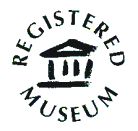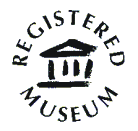

Newsletter
Issue 65 1983 ~ 2008 February 2009


Table of contents
[1] Newsdesk, and dates for your diary 2
[2] Museum Update- 3
[3] Wandle Trail 8
[4] The Wandle 11
[5] Merton Abbey Mills update 11
[6] Varnish 12
[7] Glimpse of the Past (McGow) 14
~~~ NEWSDESK ~~~
Visits to the Museum
Despite the cold winter weather the level of visitors to the Museum has been consistently good, consisting mainly of adults and children involved in school projects about the River Wandle.
Outreach
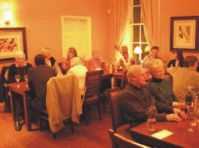
New Year’s Dinner 1 - with our waterwheel expert Norman Fairey in the foreground
1.
There have been no Outreach opportunities during January and February, but we
hope there will be a chance to promote the Museum in the Spring. We hope to be
involved with a new River and Cloth Project starting in Spring 2009 and lasting
until August 2010. This is a community arts and heritage project focusing on the
importance of the Merton textile industry of the River Wandle. It will bring to life
the stories and contributions of William Morris, Liberty & Co. and the
Huguenots. The project is divided into three sections - dyeing, stitching and
printing - and will be organised by the
London Borough of Merton and the
Embroiders Guild. Schools and
community groups will be involved and
will be visiting the Museum and Merton
Abbey Mills. We are pleased to be
participating in this project.
Educational Visits
A very interested group of older people from Age Concern Merton visited the Museum in February for a conducted tour and Textile Workshop. Their visit prompted many memories of the River Wandle in the past and they are shortly to have a visit from Groundwork Merton when they will be sharing their memories of the Wandle with each other. We have been invited to attend this session.
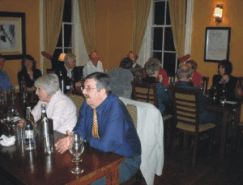
New Year’s Dinner 2 - with our treasurer Roger Steele in the foreground
Events
The New Year Dinner at Park Place Beefeater was very successful and about 20 people attended.
The next Volunteers' Lunch is on Wednesday 25th March at 12noon and we hope to see as many of you as possible at this event, where we shall be planning a future Members' Visit.
Subscriptions
Thank you to all those members who have paid their subscriptions for 2008-9. A reminder is included for those who have not yet paid.
Sheila Harris 25/2/2009
2.
MUSEUM UPDATE
Curatorial - Meg Thomas writes:
We have received the money we applied for to purchase museum quality storage and protection for our collection and spent it. Unfortunately between gaining the grant and ordering the equipment the prices went up, some quite considerably, so we have had to cut back on the order. We will be able to apply for a further grant next year, we just hope there will still be some money in the kitty.
We had a Documentation Audit, this was a review of how we record the artifacts that the museum owns or have on loan. We found it very useful and we were very glad to learn that we were generally doing it correctly. A lot of that is due to the hard work put in by Marguerite Lee Delisle when she was the archivist.
We are applying for a grant to buy a new computer and as part of the application we need to send some of our policies. One of those we need to send is our Child and Vulnerable Adult Policy. Roger Steele and I recently attended the Security Meeting Run by the Met Police. During the meeting a police officer who deals with people on the Sex Offenders List gave us a talk about child protection, quite a coincidence.
The theme was to alert museum staff to people (mainly men sadly) whose behaviour causes concern. The staff, who are accustomed to the way people behave in a museum or art gallery looking at the displays and art work, can soon spot someone who is concentrating on the other people especially children. Some of the ways these people go about their unpleasant acts seem more like events portrayed in crime series.
In our museum we are less at risk from these kinds of visitors as school visits take place when the museum is not open to the general public, and there are always plenty of teachers and parents accompanying the children. I am not sure whether this talk, or the updates we are given on terrorism, is the most depressing.
The Met Police Art Crimes dept hope to have a web site that museums and art dealers will have access to via a terminal on the entry desks that will allow the receptionist, who is often not a specialist, to check immediately whether the item brought to them is stolen. This will be especially useful in auction houses where often items are taken in and stored until an appropriate sale of like artifacts is assembled which could be many months hence and by then hopes of tracing the thief are much more remote.
We welcome school visits but are only too well aware of the difficulty and cost of bringing young children to the museum, so in our letter to schools we have highlighted that we have an outreach programme. This we hope will encourage greater use of the museums educational facilities.
We do, of course, have high hopes of the new Rivers and Cloth project (see Newsdesk) which may bring up to 20 schools to us over a three month period in Spring 2010.
Talking of Spring -
With the signs of spring emerging all around our thoughts turn to gardening. William Morris was a dedicated garden designer and felt the garden was as important as the house.
' At the Red House, the garden literally flows into the building. Morris's insistence on the integration of garden and the building encouraged a new movement in English garden design. Without Morris in fact would there have been a Gertrude Jekyll? One might argue Morris's garden was more influential than his house.'
From William Morris by Fiona MacCarthy.
NB You can now visit the Red House after 2pm from Wed to Sun without booking.
Guided tours can still be booked. Tel: 020 8304 9878
Meg Thomas
Other Museum News 1. - Ravensbury Mill Project
There has been a sudden spate of activity on Ravensbury Mill.
Constant pressure from LB Merton eventually lead to a meeting last December where Paul Church, representing the freeholders Secure Reversions Ltd, reacted to a proposal that was made by English Heritage (that he would apply for a grant for the restoration of the water wheels, and build the completion of the ceiling of the waterwheel enclosure into the bid with our support) with a proposal of his own - namely that we would proceed to take a lease of the whole site apart from the wheel enclosure, and make our own bid, with his financial support, to do the same.
We were, obviously, excited about this, and there was an outside chance we could have signed the lease by 31 March.
As one might expect, life is more complicated than that. A subsequent joint inspection of Ravensbury threw up a number of problems with which we would have to deal.
The two major problems were the continuing damp in the Eastern section of Ravensbury (partly caused by constant splashing from the road, part by gutter defects and part unexplained).
The other problem concerns access. If we were to operate from the Eastern section alone while work was being done to the Western end, the only access is through a street door that has, patently, no chance of qualifying under modern accessibility standards.
Our position remains the same - we do not sign a lease until we can do so without an immediate and enforceable obligation on us to pay out capital we do not have. That said, however, there is scope for us to push ahead. We have contacted the millwrights who provided the original quotes for the waterwheel restoration, and are only awaiting the detailed quote for the ceiling work that Mr Church holds, to be able to finalise figures for an English Heritage grant.
Once this has been done, and if it becomes clear we will get that money, there is no reason why we should not be able to put together a plan which would enable us to be in Ravensbury at last.
We will keep you posted!
Other Museum News 2 - CHAMPION OF THE WORLD!
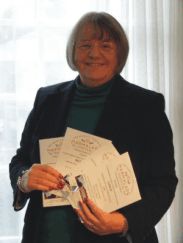
Mary, with her certificates and the prize Marmalade Spoon
1.
I hope you will all forgive a burst of
marital pride, but I am happy to use this Newsletter to tell of Mary’s success at
the world marmalade festival, now held each year at Dalemain in Cumbria. See
www.marmaladefestival.com/ for more details.
Most of you will know only too well of Mary’s catering prowess, both at volunteer lunches, and major Museum events as well as for her celebration and novelty cakes, and for the fantastic results at the annual Merton Horticultural show baking and preserves competition - where, after coming joint first in 2001, she has won the overall prize each year since, normally winning more than half the 13 categories outright (as well as taking the flower arranging cup for the last two years). Her Garden Shed novelty cake of 2007 is still talked about, not only winning its class, but gaining a rare certificate of merit from the WI judge. Her raspberry jam has been called the ‘Petrus of Preserves’ by one expert.
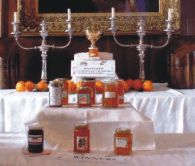
The display f prizewinning entries, with mary’s Tangerine Marmalade at the top of the tree!
Her marmalade has been a steady winner, and, last year, egged on to submit an entry to the World Marmalade competition , she selected a pot from the batch she had just made, and got it in the post just in time. Her entry was marked 17/20, with the prizewinner scoring 19/20 (which was also awarded best in show).
This year, with more time to prepare, Mary got three entries ready, one each for the ‘Seville orange’, ‘any citrus’, and ‘dark marmalade’ categories, packed them carefully, and got them in with sufficient time for them to settle, and get over the stress of the journey through the post..
Of these, she was delighted to learn that her Tangerine Marmalade had not only won best in class, but had gone on to win the prestigious Best in Show cup. The certificate has arrived, and shows she was scored 20/20 for this entry. Truly remarkable. Her permanent prize is a lovely little handmade silver marmalade
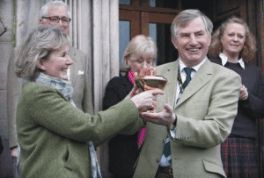
The presentation
teaspoon engraved “Winner of the World’s Original Marmalade Competition 2009”. Champion of the World indeed.
The images here show her Tangerine Marmalade with the Best in Show cup, her certificates, the prize giving with the cup being presented by the Master of the Worshipful Company of Fruiterers (by whom it was donated).
Nicholas Hart
3.
WANDLE TRAIL UPDATE.
The article about the missing Wandle Trail booklet from our last Newsletter prompted a comment from Colin Saunders, first (see below), then, from Alan Scott, an early Museum Member, a looseleaf folder containing the text of what was entitled ‘Heritage Trail’ and dates from about 1984. There is a note attached to it, indicating its text was reviewed in 1987, but that nothing significant was regarded as worth adding.
The index read as follows:
HERITAGE TRAIL
1. Amory Mills
2. Morris Works
3. Liberty Site
4. Everett's Place & Folly
5. Morden Hall Snuff Mills
6. Ravensbury Snuff Mill
7. Mitcham. Grove Mills & Fisheries Cottages
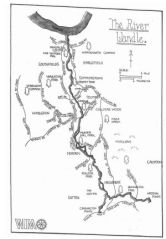
4.
The Wandle
The folder contained articles on each of these, plus some extra background information, such as the one on Varnish we repeat below.
It seems clear that this was a booklet along the lines of the current A4 sized booklet we still sell and call ‘Wandle Trail’ (the one with the drawing of Colonel Bidder on the front).
It also seems clear this was the booklet to which the 1984 Heritage Trail for the disabled was referring. What is most interesting is that this latest discovery has maps (including an early version of the one appearing in the from of Colin’s book - see image), but no clear walking route, whilst the Disabled leaflet has a clear trail, and the current Wandle Trail booklet also has clearly marked trails. It wasn’t until Colin Saunders in 1988 that a comprehensive source to mouth trail was put together, and our own Wandle Trail map derives from the same era.
Colin wrote:
December 18, 2008
Hello Nicholas
Thanks for another interesting newsletter. Could I please query the statement on page 13 referring to "a good copy of the first Wandle Trail map, which will be 25 years old in 2009", which has confused me somewhat.
As you know I was very much involved in the development of the route that goes by this name. My understanding is that it was formally launched on 18 September 1988 with a walk that I led, attended by the then Mayor of Merton and marked by the delivery during the walk of what was heralded as the first Wandle Trail "map and illustrated guide", hot off the press.
The article goes on to describe the Wandle Heritage Trail for the Disabled, which seems to be part of a longer Wandle Heritage Trail. I extensively researched walking routes in Greater London for my book, "London - the definitive walking guide" (Cicerone Press 2002), and must confess that a route by this name escaped my investigations. Furthermore, in all my time as Co-ordinator of the Wandle Trail Working Party I cannot recall any mention of this route. Neither the Wandle Trail map-guide of 1988 nor the Wandle Guide of 1997 (the "blue book") mention it, as far as I can see.
I hope that my "definitive guide" will in due course be updated, so if the Wandle Heritage Trail and the Wandle Heritage Trail for the Disabled are still being promoted (the article conveys the impression that they are), and the leaflets are still available, I would be delighted to mention them. I would also welcome clarification of the situation from anyone who was involved in the establishment of the Wandle Heritage Trail and its leaflets.
Meanwhile, unless anything I have said above is incorrect, I think it should be clarified that it is not the Wandle Trail or its map that will be celebrating their Silver Jubilee in 2009: they will be 25 years old in September 2013, and I very much hope that we shall be able to celebrate their Silver Jubilee then.
Best wishes
Colin
[address supplied]
THE RIVER WANDLE
An interesting development since last newsletter is the launch of the publicly funded River Restoration project. The Wandle benefits at three sites along its length. Anyone interested in more detail could visit:
www.guardian.co.uk/environment/2009/jan/08/river-restoration-london
and
5.
MERTON ABBEY MILLS UPDATE
Hot off the press is news that AXA, who currently own the freehold of the land to be handed over to the Priory Trust, have sealed off the land under the electricity pylon, which was being used by the market traders to park their vehicles, and for which Priory Trust was to receive financial compensation from London and Argyll.
As far as can be gleaned at short notice, this is a petty reaction to the time being taken by LB Merton’s legal department in finalising the hand over of the freehold to Priory Trust.
The legal department is gaining a very bad reputation for delaying community projects, so one’s instinctive reaction is that this is yet another occasion when it is letting us all down. We very much hope this is not the case, and that pressure can be put on all concerned to finalise this vital step. In the meantime, the market, which needs all the help it can get, is suffering yet another blow.
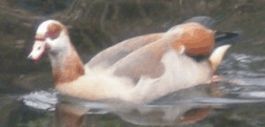
Egyptian Goose on the Wandle at Merton Abbey Mills 28 Feb 2009
On this point, for those who don’t already know, the farmers market under Keith Cook provides a complete selection of food fruit and vegetables, and the recent opening of the wonderful fishmongers there completes the picture.
Your market needs you - please use it!
A follow up to last newsletter’s piece about the cormorant - this weekend an Egyptian Goose was in evidence, bringing colour to the scene, and visitors to the wheelhouse are seeing considerable shoals of fish in the race leading under the washing spindle up to the mill wheels.
LESSER KNOWN INDUSTRIES OF THE WANDLE (from the original Wandle Heritage Trail booklet)
6.
VARNISH
Varnish is a solution of resins in a volatile solvent, combined with oils. The resin imparts hardness and lustre, the oils flexibility and toughness, and the solvent renders the solution workable and evaporates on contact with the atmosphere. Drying time and specific properties depend on the ratio of oil to solvent and oil to resin respectively.
The most common natural resins are:
Shellac derived from lac insects (lacda lacifer) native to Malaya, India and the Far East. Their natural sticky resin deposits are obtained by melting, straining then drying and flaking whole insects. Between 17,000 and 19,000 insects are needed to yield 1 lb of shellac.
Resin derived from pine trees, which exude Oleoresin. Distillation separates out the Oleoresin into an essential oil - pure turpentine - and resin. The U.S.A. are the major Producers.
Linseed oil is the most commonly used oil. Derived from flax (linum Usitatisimum), a different variety than that used for linen, with an average oil content of 33-43%. The U.S.A. and India are the major producers.
The original methods required great skill on the part of the varnish maker. The firm supplied the raw materials and equipment while the master varnish makers traveled from place to place providing their experience and judgment to mix and blend the ingredients. The chips of resin were heated in copper 'kettles'., a process known as 'gum running'. At the correct temperature and consistency, oils were added and liquification and boiling continued until the varnish maker was satisfied that the next critical stage of gelling would produce the right result. Such methods as spitting into the varnish to judge the temperature and dipping a feather to check the consistency were not uncommon. It is noted that in some instances all the other workers were required to vacate the premises while the 'secret to success' was undertaken.
The vapours and residues collected from the processes went into the manufacture of floor cloth better known as linoleum.
The first varnish makers at Phipps Bridge were registered in 1845, the main ones being Harland & Sons (established in 1701) bought by Ault & Wiborg in 1935; Turner; Addington, bought by G.Hadfield in 1892; and Parsons, later part of McPhearson &Co.
It is uncertain why varnish makers chose this area as water and water power were not needed in their manufacturing process. The most significant factor was probably the closing of the trade centre at Battle Bridge Islington for development by the Great Northern Railway. From a safety angle the isolation of the sites was another important factor in choosing this area for varnish works. By the end of the C19th paint and varnish manufacturers had set up trade the length of Church Rd and from Merton to Mitcham of Western Rd., establishing the area as the new varnish trade centre.
[for the map accompanying this article - see last page]
7.
GLIMPSE OF THE PAST
Our thanks to Peter McGow, who has provided some interesting snippets which give detail to his work on the Mills of Wandle, of which this is the first:
THE AMERY MILLS, MERTON. A FOOTNOTE.
In my account of the Amery Mills (34), I wrote that the estate including the mills was purchased in 1668 by Thomas Pepys. I wondered at the time if Thomas was a relation of Samuel Pepys, the diarist, but didn't then pursue the matter.
Recently I thought to look further into the subject, and found that they were indeed related. They were cousins, and in his diary Samuel first recorded a meeting with his cousin Thomas on 6 January 1659/60. This was followed by accounts of several later meetings.
The identification is firmly established by an entry on 21 May 1668 when Samuel wrote that he had received news of "my cozen Tom Pepys's buying Martin Abbey in Surry." (The actual conveyance was executed on 4-5 June 1668.)
Thomas Pepys. who was more than 20 years older than Samuel, lived at Hatcham, New Cross, before moving to Merton, where he died in 1676.
It would have been satisfying to discover that Samuel Pepys visited Thomas at Merton, but alas, there is no evidence for this.
Peter McGow
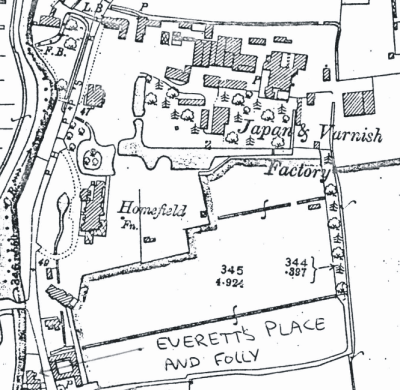
The Varnish Factory at Phipps Bridge
The Vestry Hall Annexe, London Road, Mitcham, Surrey CR4 3UD
Tel: 020-8648-0127
~~~~~~~~~~
OPEN: Every Wednesday 1 ~ 4 pm;
First Sunday of each month 2 ~ 5 pm.
~~~~~~~~~~
The Museum is also open to schools and groups by appointment.
~~~~~~~~~~
Admission: Adults 50p, Children & Senior Citizens 20p
The Wandle Industrial Museum would like to point out that the views of contributors to this newsletter are not necessarily the views of the Museum. We would be happy to give the right to reply to anyone who finds the content contentious.
